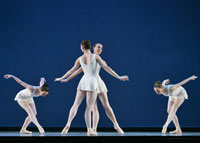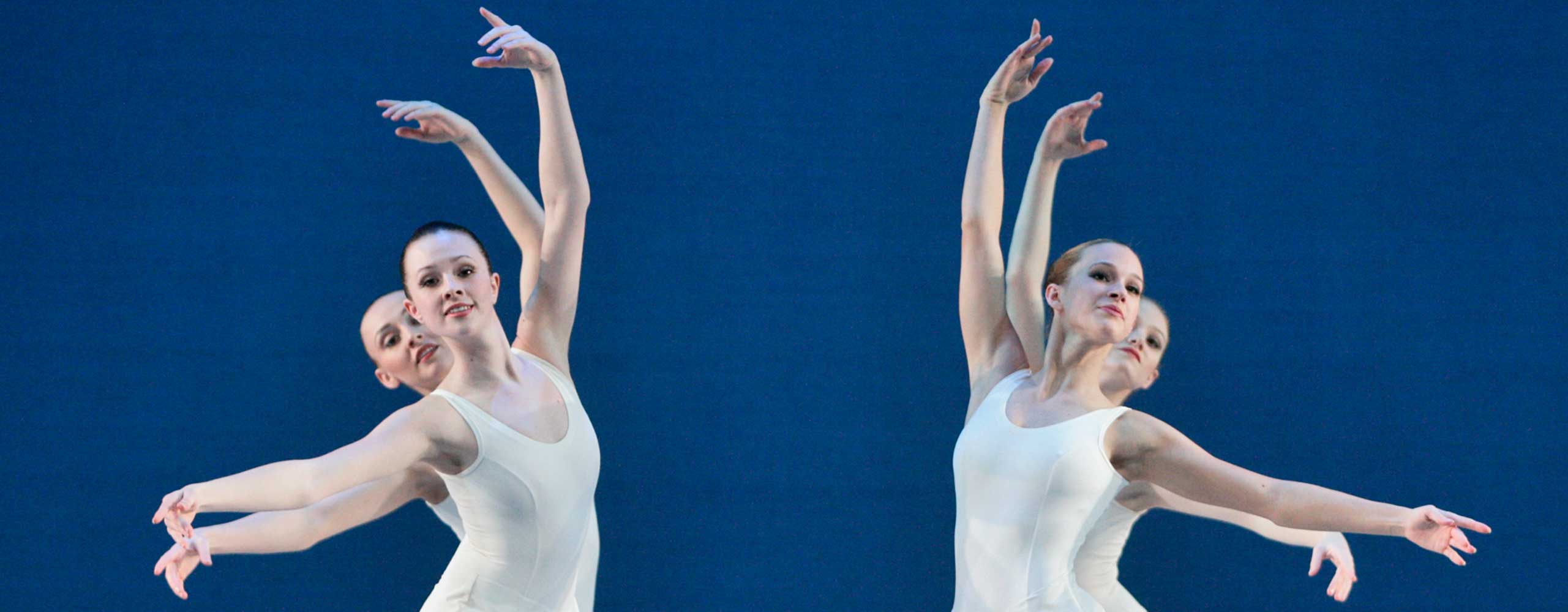
Choreographer: Balanchine
Music: Bach
From the felicitous union of Bach’s venerable Concerto in D minor forTwo Violins and George Balanchine’s illuminating choreography cameConcerto Barocco. The work was commissioned for the 1941 South American tour of Ballet Society, though first performed by the American Ballet in New York in 1940. It has been performed in the fifty years since by companies all over the world.
The Double Concerto was, and remains, an extraordinarily complete and satisfying work, loved both by those who play and by those who listen. Coupled with dance, it became a new and different work, a visual carving of entwining graces which embellish and complement the score. The dance seems to develop organically, to grow and flower around the music, honoring the strongest elements in the baroque vocabulary. The dance movement throughout is akin to the ornamentations of baroque architecture, not pasted-on ornamentation but rather sprung-from and energized-by structure of the music.
Concerto Barocco has no “subject matter” beyond the music and the dance. There are three movements, the first of which, Vivace, begins with a corps of eight girls responding energetically to the music’s brilliance. They are joined by two soloists as the two solo violins enter. Though the music suggests the movement, the dance is never literal, never beat-by-beat mirroring of the instrumental line. The 2nd movement, the exquisite Largo, again for corps and two soloists (a man and a woman) is one of tender lyricism. From the opening melody, through mounting intensity of overlapping, entwining voices, the dance unfolds to full bloom. The dancers are ever-connected, expanding without interruption. In the final movement, Allegro, the original soloists return and with the corps complete, the ballet concludes with robust bouncing vigor much as when the work began. The first and third movements thus give colorful frame to the quiet sustained intensity of the work’s center.
The white practice clothes worn by the dancers seem eminently suited to the piece and the period it reflects, but dance historians will note that the original costumes, created by Eugene Berman, were of heavy molded rubber, lavishly embellished and ornamented-in the baroque style.
With Concerto Barocco, Balanchine extended his ideas about the corps first evidenced in Serenade. As critic Marcia Siegel observed in The Shapes of Change, Concerto Barocco is essentially a ballet of ensemble, despite the power of the solo and duet work. The corps is the constant, “made more personal by reducing its size” and comes to be “an instrumental colleague of the principals, with a complex texture of its own, like a piano…an intriguing presence now revealed in its own right.”
World Premiere: June 27, 1941, American Ballet Caravan, Rio de Janeiro, Brazil
Kansas City Ballet Premiere: October 22, 1990, Lyric Theatre
